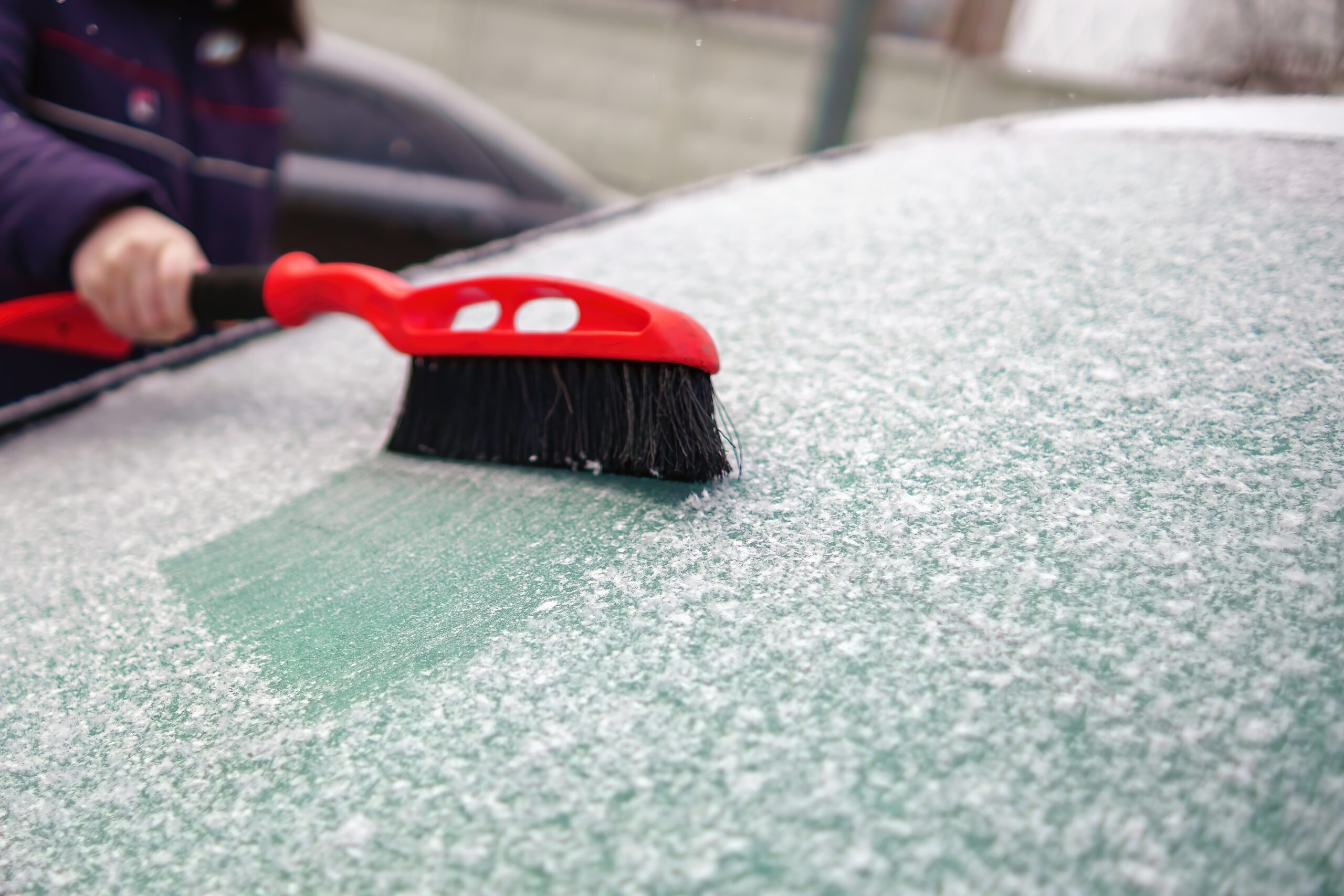Whether you’re braving a blizzard for your daily commute to work, or hit a patch of black ice on your way home from a reformer pilates class, having a car that can withstand the elements can be a lifesaver.
Here’s a rundown of the 10 best cars for snow in 2024 that can help you tackle the winter driving safely. Each vehicle on this list prioritizes all-wheel drive or excellent traction systems, along with other essential attributes and strong safety ratings* to help you navigate through the snowy weather conditions with ease. And don’t forget—winter tires or snow tires are the perfect finishing touch for extra grip and performance on icy roads.
Keep in mind: While these vehicles and their features can help improve safety in winter conditions, it’s also essential to practice safe driving habits and avoid driving in severe winter weather when it’s not advisable.
1. Subaru Outback
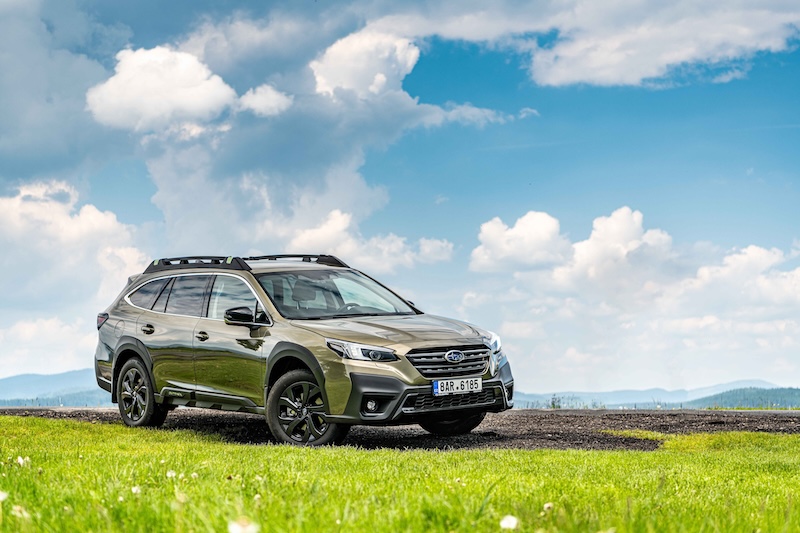
Starting MSRP: $28,895
Drivetrain: All-Wheel Drive (AWD)
Ground Clearance: Up to 9.5 inches
Safety rating: 5-Star Overall Safety Rating from NHTSA
The Subaru Outback excels in winter driving with its Symmetrical All-Wheel Drive, which ensures balanced traction in snow and ice. Its 9.5 inches of ground clearance and X-MODE enhance control in deep snow and slick conditions, while Hill Descent Control maintains safe speeds on steep slopes. Added safety features like Pre-Collision Braking and EyeSight Driver Assist provide extra protection with automatic braking and lane-keeping assistance.
Learn more about Subaru Outback insurance costs to ensure you’re fully prepared.
2. Jeep Grand Cherokee
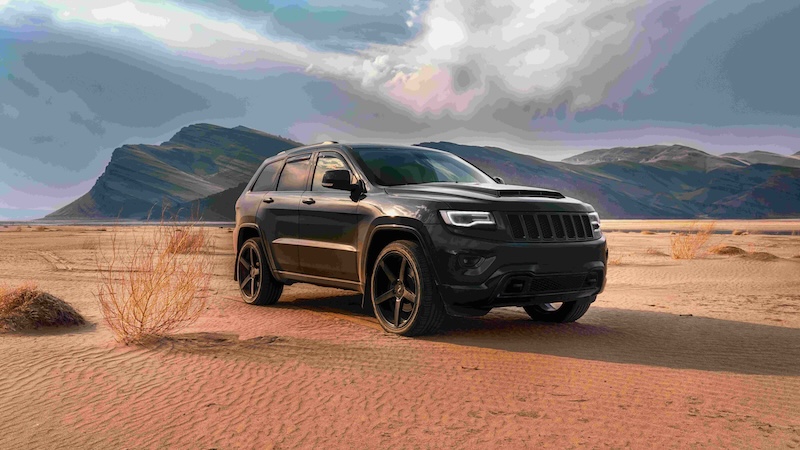
Starting MSRP: $36,495
Drivetrain: Rear-Wheel Drive (RWD), with Four-Wheel Drive (4WD) options
Ground Clearance: Up to 10.9 inches
Safety Rating: 5-Star Overall Safety Rating from NHTSA
The Jeep Grand Cherokee stands out for its off-road capabilities and robust performance in winter conditions. The Quadra-Trac II 4WD system ensures excellent traction and stability on icy or snowy roads, while the Hands-Free Driving Assist provides added convenience and safety during winter driving. With up to 375 horsepower and a ground clearance of up to 10.9 inches, the Grand Cherokee handles rough terrain and deep snow with ease. This SUV combines power, advanced traction features, and a spacious interior for a dependable winter driving experience.
Explore Jeep Grand Cherokee insurance costs to understand what you might pay for coverage.
3. Toyota RAV4

Starting MSRP: $28,675
Drivetrain: Torque Vectoring All-Wheel Drive (AWD) available
Ground Clearance: Up to 8.4 inches
Safety Rating: 5-Star Overall Safety Rating from NHTSA
The Toyota RAV4 stands out for its reliable winter driving capabilities. The Dynamic Torque-vectoring AWD system adjusts power distribution to enhance traction and stability on snowy roads. With its Multi-Terrain Select feature, you can easily switch to snow mode for improved control. Toyota Safety Sense offers a suite of advanced safety features, including Lane Departure Warning and Adaptive Cruise Control, ensuring added security during winter travel.
Find out Toyota RAV4 insurance costs to help plan your budget.
4. Ford Escape
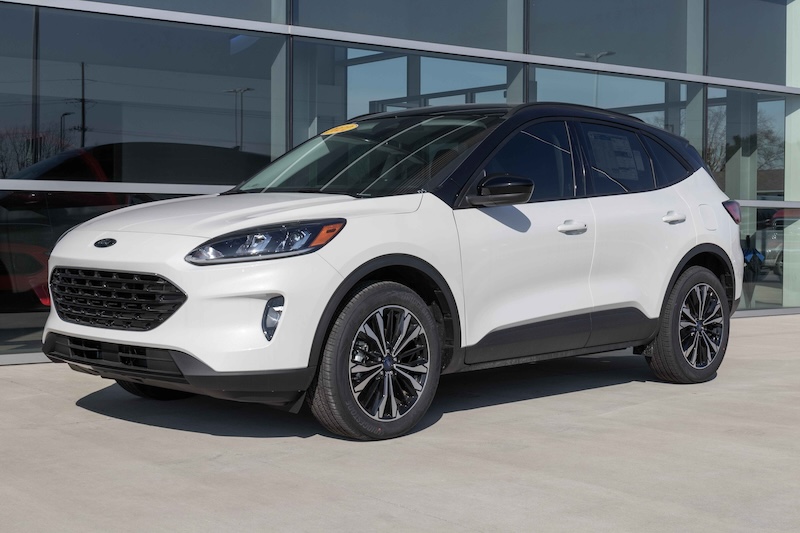
Starting MSRP: $27,995
Drivetrain: Front-Wheel Drive (FWD), with All Wheel Drive (AWD) options
Ground Clearance: Up to 7.5 inches
Safety Rating: 5-Star Overall Safety Rating from NHTSA
The Ford Escape is a versatile SUV designed to handle winter weather with ease. Its Intelligent AWD system automatically adjusts to changing road conditions, while multiple driving modes offer enhanced vehicle stability and control. The available hybrid option ensures better fuel efficiency during cold months. With its balanced ground clearance and advanced safety features, the Escape provides a reliable and comfortable ride in snowy conditions.
Make sure to review Ford Escape insurance costs before making your final decision.
5. Volvo XC90
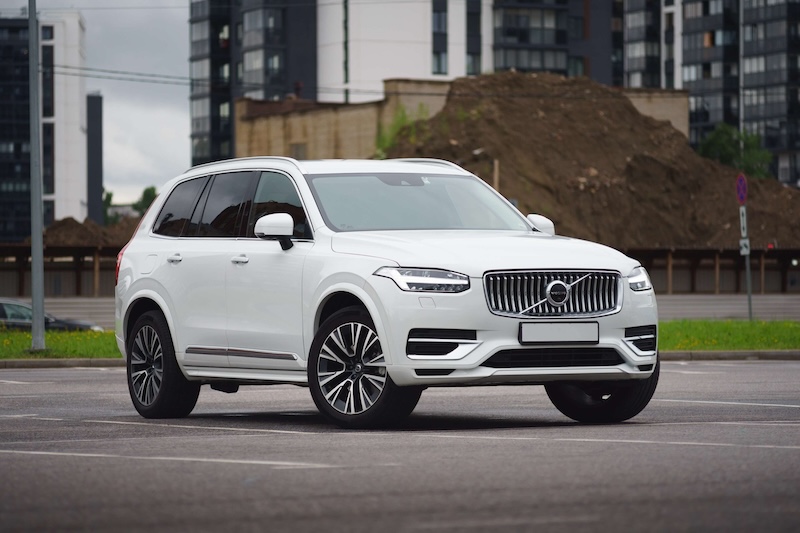
Starting MSRP: $56,600
Drivetrain: All-Wheel Drive (AWD)
Ground Clearance: Up to 7.5 inches
Safety Rating: 5-Star Overall Safety Rating from NHTSA
The Volvo XC90 merges elegance with winter readiness. Its advanced AWD technology provides reliable traction on icy roads, while the safety feature that detects and corrects vehicle drifting ensures stability in challenging conditions. With up to 295 horsepower, this SUV delivers both power and performance. The XC90’s premium interior and advanced safety systems make it a top choice for winter driving comfort and security.
Check out Volvo XC90 insurance costs to see how much coverage might be.
6. Nissan Rogue

Starting MSRP: $28,850
Drivetrain: All-Wheel Drive (AWD), with Front-Wheel Drive (FWD) options
Ground Clearance: Up to 8.2 inches
Safety Rating: 5-Star Overall Safety Rating from NHTSA
The Nissan Rogue is well-suited for winter weather, featuring an Intelligent AWD system that dynamically adjusts power distribution for improved traction on slippery roads. The available snow mode enhances control in snowy conditions, while Blind Spot Warning adds an extra layer of safety. With its reliable ground clearance and adaptable drivetrain, the Rogue ensures a secure driving experience throughout winter.
Look into Nissan Rogue insurance costs to fully understand what you might pay.
7. Chevrolet Equinox

Starting MSRP: $28,600
Drivetrain: Front-Wheel Drive (FWD), with All-Wheel Drive (AWD) options
Ground Clearance: Up to 7.6 inches
Safety Rating: 5-Star Overall Safety Rating from NHTSA
The Chevrolet Equinox offers a practical and efficient solution for winter driving. Its available AWD capability provides on-demand traction to tackle snowy conditions, while standard safety features like Forward Collision Alert and Lane Keep Assist enhance overall driving security. With its balanced ground clearance and thoughtful design, the Equinox ensures a dependable winter driving experience.
Explore Chevrolet Equinox insurance costs to see how much coverage might be.
8. Hyundai Tucson
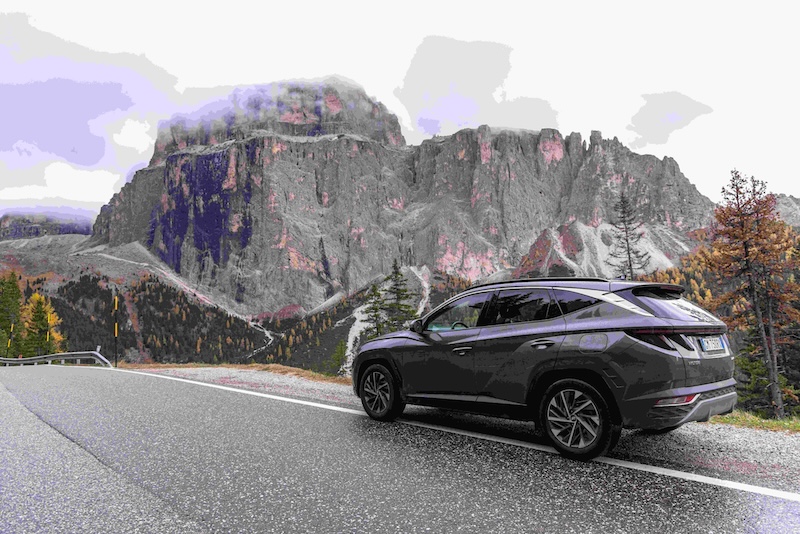
Starting MSRP: $28,355
Drivetrain: Front-Wheel Drive (FWD), with All-Wheel Drive (AWD) options
Ground Clearance: Up to 8.3 inches
Safety Rating: 5-Star Overall Safety Rating from NHTSA
The Hyundai Tucson is equipped to handle winter driving with its HTRAC AWD system, which provides enhanced control and stability on snowy roads. The vehicle’s Driver Attention Warning and Forward Collision Assist features add extra layers of safety. With its solid ground clearance and reliable performance, the Tucson delivers a confident driving experience in winter weather.
Find out Hyundai Tucson insurance costs to help plan your budget.
9. Kia Sportage

Starting MSRP: $27,190
Drivetrain: All-Wheel Drive (AWD)
Ground Clearance: Up to 8.3 inches
Safety Rating: 5-Star Overall Safety Rating from NHTSA
The Kia’s Sportage offers a well-rounded option for winter driving with its Multi-terrain AWD mode and Sportage X-Pro exclusive tires, which enhance grip and control on snowy surfaces. The Auto Emergency Braking system adds safety by automatically applying brakes to prevent collisions. With its solid ground clearance and advanced features, the Sportage is a reliable companion for winter journeys.
Learn more about Kia Sportage insurance costs to ensure you’re fully prepared.
10. Subaru Forester

Starting MSRP: $29,695
Drivetrain: All-Wheel Drive (AWD)
Ground Clearance: Up to 8.7 inches
Safety Rating: 5-Star Overall Safety Rating from NHTSA
The Subaru Forester continues Subaru’s tradition of excellent all-weather capability. Its X-MODE feature enhances traction and control on snow and mud, while the standard EyeSight Driver Assist Technology provides additional safety by supporting lane-keeping and pre-collision braking. With its impressive ground clearance and reliable AWD system, the Forester is well-equipped for winter driving challenges.
Make sure to review Subaru Forester insurance costs before making your final decision.
Understanding the key factors for winter vehicles
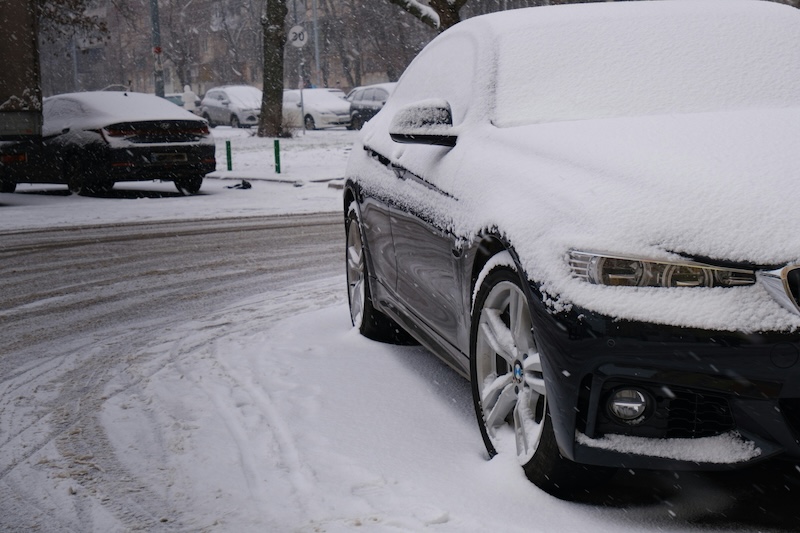
When it comes to choosing the best car for winter driving, understanding and comparing key factors like drivetrain, ground clearance, and safety features can guide you to the right choice for your needs.
By evaluating how each of these elements contributes to a vehicle’s performance in snow and ice, you can make an informed decision that ensures both safety and confidence on winter roads.
All-Wheel Drive (AWD) and Four-Wheel Drive (4WD)
These systems enhance traction by distributing power to all wheels, which is crucial for maintaining grip on slippery surfaces. AWD is better suited for typical winter driving on paved roads, as it automatically adjusts power between the wheels for smooth, consistent traction.
In contrast, 4WD offers greater capability in off-road or severe conditions, allowing for manual engagement to deliver maximum power and control on challenging terrains like deep snow or mud. While AWD is more convenient for everyday use, 4WD excels in extreme environments.
Ground clearance
A higher ground clearance helps a vehicle navigate over snow and ice without getting trapped. Vehicles with good ground clearance can easily tackle deeper snow accumulations, reducing the risk of getting stuck.
Traction control systems
Traction control systems help you stay in control by automatically adjusting the power sent to each wheel based on the road conditions. If the road is slippery due to snow or ice, these systems reduce power to the wheels that are slipping and increase it to the wheels with better grip. This real-time adjustment helps prevent skidding and keeps your car stable during tough winter driving conditions.
Tire quality
Investing in winter or snow tires is essential for providing superior grip on cold, icy roads. These tires are specifically engineered with tread patterns and rubber compounds designed for optimal performance in winter conditions.
Keep in mind: The cars listed in the article typically do not come with winter or snow tires as standard. Instead, you’ll need to purchase these tires separately. Some manufacturers may offer winter tire packages as optional add-ons, but it’s often necessary to arrange for a professional to switch out your regular tires for winter ones to ensure optimal performance and safety on icy roads.
Safety features
On top of performance, features such as collision warning systems, lane assist, and stability control further enhance safety during winter driving. These innovations help ensure that drivers can maintain control in unpredictable weather.
Get ready for winter routine car maintenance
Before the cold sets in, make sure your vehicle is prepared for winter by following these preventative car maintenance steps, including a trip to a trusty mechanic as needed:
Inspect your windshield wiper blades
Ensure your wipers are in top condition, replacing them annually. During winter, lift the wipers when parked to prevent ice buildup on the blades.
Check your tires
Regularly monitor tire pressure, as it can fluctuate with temperature changes. If you encounter heavy snowfall, consider switching to winter or snow tires for better traction on icy roads.
Top off your coolant
Keep an eye on your antifreeze levels in the radiator. Insufficient coolant can lead to a frozen engine and costly repairs—definitely not something you want to deal with in winter.
Test your car battery
Cold weather can be tough on batteries, so it’s smart to have yours tested before winter arrives. A strong battery can help you avoid potential breakdowns in freezing temperatures.
Prepare an emergency kit
Equip your car with essentials like blankets, a flashlight, snacks, a first-aid kit, and winter-specific tools like an ice scraper and a shovel. These items can be lifesavers in unexpected winter situations.
Before we go…
Having a vehicle that’s equipped with the right safety and performance features can give you confidence behind the wheel, especially in unpredictable winter driving conditions. And remember—having the right car insurance is just as crucial as choosing the right vehicle.
With the right coverage, you can drive with a peace of mind. Getting a Lemonade Car Insurance quote is a breeze compared to navigating through deep snow. Click below to get a free quote and keep your new car protected!
A few quick words, because we <3 our lawyers: This post is general in nature, and any statement in it doesn’t alter the terms, conditions, exclusions, or limitations of policies issued by Lemonade, which differ according to your state of residence. You’re encouraged to discuss your specific circumstances with your own professional advisors. The purpose of this post is merely to provide you with info and insights you can use to make such discussions more productive! Naturally, all comments by, or references to, third parties represent their own views, and Lemonade assumes no responsibility for them. Coverage and discounts may not be available in all states.

